Here is a look back at our visit to New Mexico’s Spaceport America ten years ago.
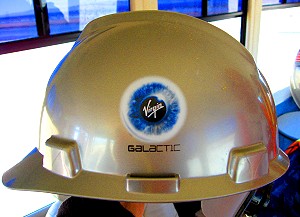 New Mexico has been on the cutting edge of the space age ever since there was such a thing as the space age.
New Mexico has been on the cutting edge of the space age ever since there was such a thing as the space age.
Because of the wide open spaces, experimental rocket launches, missile testing and the world’s first atomic explosion have taken place out among the cacti and roadrunners.
We saw the questionable side of science, with a dash of real rocketry, in Roswell, but the real heavy lifting of scientific discovery has been elsewhere in The Land of Enchantment.
To hit these hot spots we made a base camp in the town of Truth or Consequences and, like any normal people, we asked about the name.
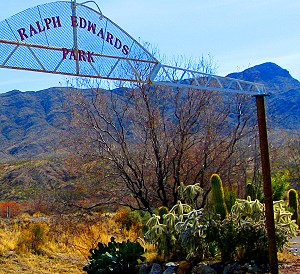
Back in 1950 the town was called Hot Springs. When the radio show “Truth or Consequences” offered to air the show from any town willing to change their name, this little burg jumped at the chance.
Next thing they knew the show’s host, Ralph Edwards, is in town and the whole world, or at least the American radio listening public,
is aware of Truth or Consequences, New Mexico.
Edwards took to the place like a duck to water and visited during Fiesta for the next fifty years. The townfolk named a park after him, where they still hold Fiesta every May.
A short drive over the mountains took us to White Sands, which is famous for two things — The White Sands Missile Range and White Sands National Monument.
The missile range is top secret. There is a museum open to the public but the rest is off limits, no matter how gypsy a GypsyNester has gone.

Back in 1945 the army started bringing captured German V-2 rocket parts to this forty-mile-wide and one hundred-mile-long facility. By later that year missiles were flying.
That same summer, just north of White Sands, the world’s first atomic explosion was detonated at the Trinity test site. Needless to say, that radioactive landmark is also off limits to the public.

The space between these two super secret scientific spots is filled with white sand. Hence the name. White Sands National Monument is a blinding alien landscape with giant shifting dunes of pure white gypsum sand.
Upwind of the site a unique dry lake bed forms a never ending supply of the snowy mineral that blows across the barren landscape.
Normally the gypsum would dissolve in the rain, but rain nearly never falls in this desert, so the giant sandbox continues to grow and grow.
See more photos from White Sands National Monument

Most of the wildlife — lizards, mice, rabbits and foxes — that inhabit this peculiar environment have adapted, becoming white to blend in with the surrounding sand for protection.
However, according to one of the park signs, these little guys still end up as tasty little dishes of fast food. Call us wacky, but that seems like the sign might be just a tad disturbing to the kiddies.
Good thing ours are all grown up.

The last of the high tech sites in the area was the one we made the trip to see. Spaceport America is the world’s first spaceport built specifically for commercial use.
The brainchild of Stanford University’s Dr. Burton Lee, the project became a reality after Congress and New Mexico State University got involved.
Soon after that, Governor Bill Richardson and Sir Richard Branson announced that Virgin Galactic would make New Mexico its world headquarters. In 2006 the state formed the New Mexico Space Authority and passed the necessary laws to open the world’s first commercial spaceport.
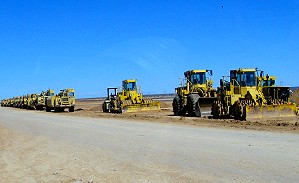
We contacted Dr. Jerry D. Brown of Spaceport Tours to set up a visit to this real life slice of the future. The good doctor, a NASA veteran, has secured exclusive rights to show people around the facility.
A dusty van ride across the desert brought us to the gate where we were issued our visitor passes and hardhats. It was all very official and highly secured.
A little farther and we found ourselves standing in the middle of a huge windswept stretch of blacktop. Enormous earthmovers, dump trucks, bulldozers and cement mixers line the edges and roared around us as they labored away.
It is still just a construction site, but work is nearly complete on the ginormous two mile long runway, hangers and terminal that Virgin Galactic will be using for their sub-orbital tourist space flight excursions.
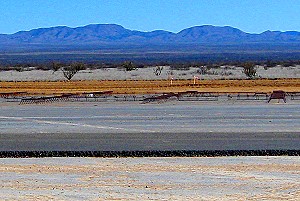
This is no regular airport runway. It must be perfectly smooth, so specifications are meticulously met down to the tiniest fraction of an inch.
The mothership “Eve” will take off from here, carrying the VSS Enterprise with six passengers to nearly 50,000 feet where it will disconnect and fly into space.
After a few weightless minutes, Enterprise will return to Earth and land on this same strip. All for a paltry ticket price of $200,000.
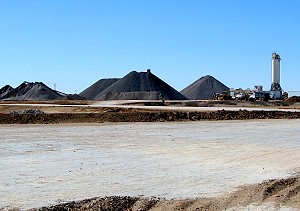
While it will be at least a year before any of Virgin’s over three hundred prepaid customers get their rides into space, there have already been numerous launches from the spaceport.
These take place at several nearby
vertical launch sites, where Up Aerospace uses traditional rockets to blast satellites out into space.
So this visit was ten years ago and even though in the years since then things have not always gone according to plans, the spaceport has become an active and important launchsite for America’s growing private space flight industry.
Here’s hoping that continues…
David & Veronica, GypsyNester.com



Thanks!
Hey very nice blog!
Thanks!
I absolutely love your blog.
Thank you!
Sounds like you had another interesting adventure. There really are some great places to explore and people to meet. Too often we forget they can be in the countries we live in.